This presentation is part of the 2012 National Highway Research Priorities Webinar Series.
Livability and Sustainability
Coordination of Highway Research�with �University Transportation Centers (UTCs)
May 9, 2012
PDF files can be viewed with the Acrobat® Reader®
Michael F. Trentacoste
Associate Administrator for
Research, Development, and Technology (RD&T)
Federal Highway Administration (FHWA)
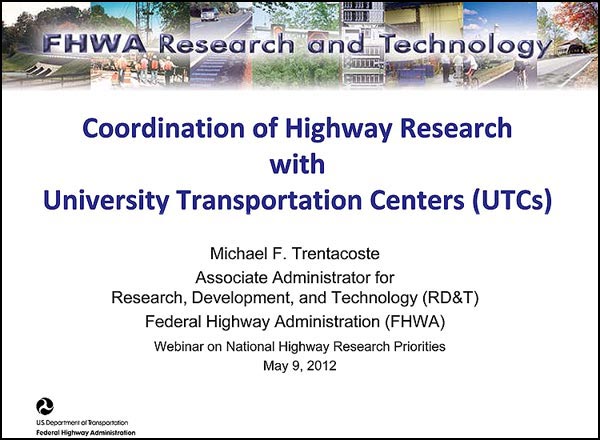
Webinar Series Topics and Dates
- State of Good Repair, March 28th
- Economic Competitiveness, April 5th
- Safety, May 8th
- Livability and Sustainability, May 9th
- Policy and Innovative Financing, May 10th
Invited Participants
- New UTCs
- State Research Managers
- FHWA Division Office Research Coordinators
Host and Presenters
- FHWA Research and Development (R&D) Offices and Program Offices
Webinar Purpose
- Provide FHWA perspectives on national challenges and highway research priorities
- Opportunity for UTCs to consider highway research priorities in their research plans and initiatives
- Inform State Research Managers on priorities
- Provide FHWA contacts for follow-up communications and coordination
Thanks for Your Participation
Thanks to the Research and Innovative Technology Administration (RITA) for this opportunity to communicate priorities to the UTCs
For more information about UTC participation, contact:
Debra Elston, 202-493-3181
www.fhwa.dot.gov/research
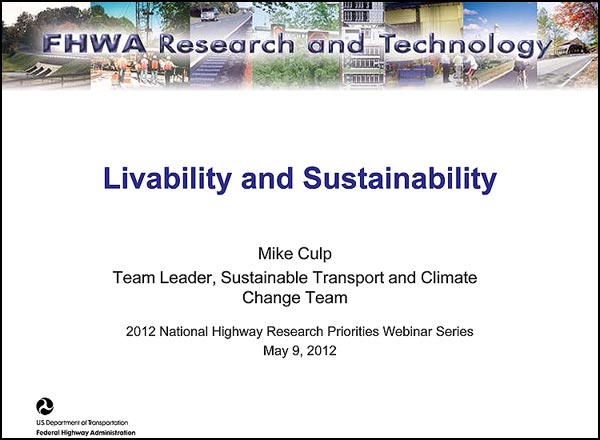
Topics Covered in Presentation
- Livability
- What are livable communities?
- FHWA's role and related activities
- Sustainability
- What does sustainability mean for FHWA?
- Sustainable Highways Initiative and INVEST (Infrastructure Voluntary Evaluation Sustainability Tool)
- Climate Change
- Areas of Consideration by UTCs
What is Livability?
Livability is about using the quality, location, and type of transportation facilities and services available to help achieve broader community goals such as access to good jobs, affordable housing, quality schools, and safe streets. This includes:
- Addressing road safety and capacity issues through better planning and design
- Maximizing and expanding new technologies such as intelligent transportation systems and quiet pavements
- Using travel demand management approaches in system planning and operations
- Strategically connecting the modal pieces – bikeways, pedestrian facilities, transit services, and roadways into a truly intermodal, interconnected system
- Developing high quality transportation to foster economic development
- Community design that offers residents and workers the full range of transportation choices
What are Livable Communities?
Places that have a variety of housing and transportation choices with destinations close to home.
"Livable Communities are where people have access to many different forms of transportation and affordable housing...."
U.S. Department of Transportation (USDOT) Secretary, Ray LaHood
See www.dot.gov/livability for more on USDOT's perspective.
Partnership for Sustainable Communities (PSC)
- Housing and Urban Development (HUD), USDOT, and Environmental Protection Agency (EPA)
- PSC Livability Principles:
- Transportation Choices
- Equitable, Affordable Housing
- Economic Competitiveness
- Support of Existing Communities
- Alignment of Federal Policies
- Value for Communities
PSC 2012 Focus Areas
- Share Models of Local Successes
- Continue Coordination to Make Government Work Better
- Help Communities Solve Problems
What is FHWA's Role?
- Support livable communities through transportation-related projects, project activities, and programs such as:
- Context Sensitive Solutions (CSS)
- Public Involvement
- Transportation Enhancements
- Congestion Mitigation/Air Quality
- Safe Routes to School
- Aid the planning and development of projects that may have:
- Multimodal, multifaceted dimensions
- Nontraditional partners/sponsors
- Interdisciplinary elements
- Selection and criterion outside of the regular process
- Raise awareness
- Help practitioners understand the role of highways and related programs in supporting livability
- Engage in Partnership efforts and engage State departments of transportation (DOTs), State agencies, and metropolitan planning organizations (MPOs) in advancing goals of the partnership
- Connect partners with available resources
- Facilitate interaction among diverse local, regional, State and Federal partners to advance livability through transportation plans and programs, and coordination with other community elements
FHWA's Progress
Awareness Building
Webinars
- CSS Clearinghouse Sponsored Livability Webinar (September 2009)
- CTE (Center for Transportation and the Environment) Livability Webcast (November 2009)
Capacity Building
- FHWA/FTA (Federal Transit Administration) Livability Initiative Training
- Transportation and Land Use Webinar
- Freight and Livability Planning on the Web Session
- How to Work with Partners to Advance Livability Webinar
- Livability in Transportation Guidebook
- Livable Communities Strategic Initiative
- The Role of FHWA Programs in Livability: State of the Practice Summary
- Regional Livability Workshops
- Tool kit of materials (fact sheets, livability principles videos)
- Creation of Livable Communities Booklet
- Development of Performance Measures Guidebook
Areas of Consideration by UTCs
- Development of curricula that incorporate livability and sustainability principles and applications
- Tools and methods for livability/sustainability performance measurement
Overview of Sustainability
- Satisfying basic social and economic needs, both present and future, and the responsible use of natural resources, all while maintaining or improving the well-being of the environment on which life depends
- Addressing environmental, economic, and social equity dimensions (triple bottom line)
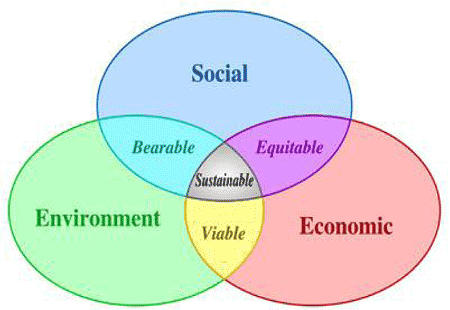
What is a Sustainable Highway System?
- Integral part of sustainable development
- Satisfies functional requirements
- Fulfills transportation goals and needs
- Addresses development and economic growth
- Avoids, minimizes, reduces impacts
- Environment
- Consumption of resources
Sustainability and FHWA
- Deliver the Federal Aid Highway and Federal Lands Highway (FLH) programs in a more sustainable way
- Make wise investment decisions w/limited resources
- Encourage change in professional practice
- Take advantage of opportunities to include sustainability throughout the decisionmaking process
- Go beyond compliance
- Seek Balanced solutions
- Stress implementation of sustainable practices: sustainability = action
Sustainability and the Project Lifecycle
- For sustainability to be fully integrated into highway and transit programs, it must be considered throughout the project lifecycle
- Must address sustainability from planning through operations
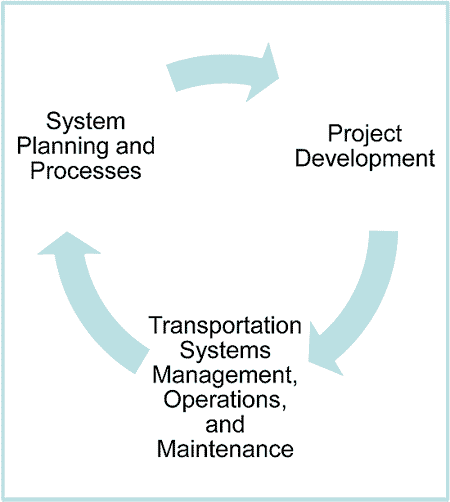
Examples of Sustainable Practices
- System Planning
- Integrated planning
- Mitigation banking
- Fiscal planning
- Project Development
- Cost-benefit analysis
- Construction equipment emission reduction
- Recycling and reuse of materials
- Operations and Maintenance
- Strong asset management
- Roadside vegetation management
- Infrastructure maintenance
Sustainable Highways Initiative
- Promote coordination within FHWA
- Regular meetings of the FHWA Sustainable Highways Working Group (Head quarters (HQ) program offices, divisions, Resource Center (RC) offices, FLH)
- Partnerships on key program/research gaps
- Coordination with other FHWA initiatives (i.e., Sustainable Pavements Program)
- Web site to serve as portal to access information on activities and available resources: www.sustainablehighways.dot.gov
- Case Studies to highlight initiatives and practices related to sustainability
- Strengthen engagement with DOTs and MPOs
- Sustainability Community of Practice
- Assistance with development of sustainability initiatives within their agencies
- Coordination with other partners
- American Society of Civil Engineers (ASCE), American Council of Engineering Companies (ACEC), American Public Works Association (APWA), American Association of State Highway and Transportation Officials (AASHTO), Association of Metropolitan Planning Organizations (AMPO), and others
- FTA, EPA, and other Federal agencies
- Development and deployment of decision tools: INVEST
What is INVEST?
IN-VEST - Infrastructure Voluntary Evaluation Sustainability Tool
A web-based, self-evaluation tool for measuring sustainability over the life cycle of a transportation project or program—from system and project planning through design and construction, to operations and maintenance
INVEST Goals
- Encourage sustainable highway practices
- Help agencies measure sustainability and support internal improvement
- Provide a framework for communicating with stakeholders and decisionmakers about sustainability
- Establish a method for identifying sustainable highway systems, projects, programs
Overview of INVEST
- Voluntary Web-based Tool
- Lists "sustainable criteria" based on best practices for three project phases:
- System Planning (SP)
- Project Development (PD)
- Operations and Maintenance (OM)
- Other sustainable highways tools used as references (GreenLITES, I-LAST, Greenroads)
- FHWA SMEs (subject matter experts) provided significant assistance and advice
- Coordination with professional/stakeholder organizations
Evolution of INVEST
- Beta Test version
- Released Fall 2012
- Over 700 comments from AASHTO, EPA, SMEs, others
- Pilot Test version
- Released Fall 2011
- Over 1200 comments from pilot test participants, SMEs, FTA, others
- Version 1.0
- Release expected Summer 2012
Pilot Testing of INVEST
- Testing done on the Project Development (PD), System Planning (SP) and Operations and Maintenance (OM) criteria from July 2011 to February 2012
- Objectives were to obtain input on:
- Further refinements to the criteria
- Scoring and achievement levels
- Making the tool easier to use
INVEST Pilot Test Locations
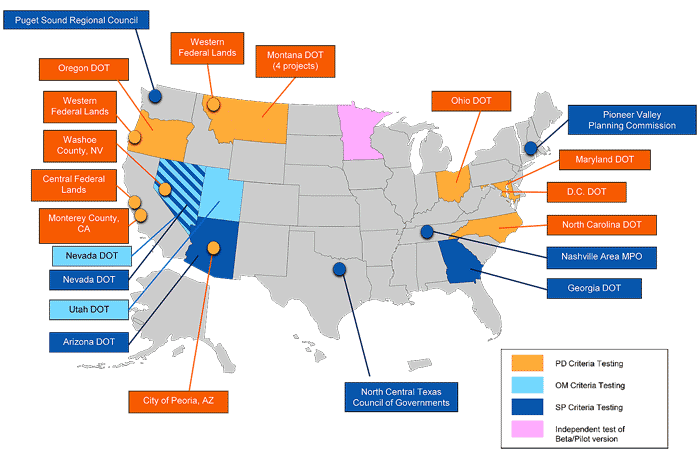
Lessons Learned from Pilots
- Overall pilot agencies were supportive and enthusiastic about INVEST
- Pilot agencies suggested many good technical and contextual changes to the criteria and Web interface
- Pilot agencies would like to see:
- More information and a guide for using the tool
- Additional examples of sustainable practices, case studies, etc.
Changes for INVEST 1.0
- Currently making significant changes to INVEST as a result of pilot feedback
- More flexibility in selecting relevant PD criteria to address urban versus rural and large versus small project concerns
- Provision for the ability to record notes or comments within INVEST
- More opportunities for partial credit (i.e., gradation in point scale within criteria)
- More emphasis on the process of using the tool and learning (not the score!)
Project Development Criteria
- PD-01: Economic Analyses
- PD-02: Life-Cycle Cost Analyses
- PD-03: Context Sensitive Project Development
- PD-04: Highway and Traffic Safety
- PD-05: Educational Outreach
- PD-06: Tracking Environmental Commitments
- PD-07: Habitat Restoration
- PD-08: Stormwater
- PD-09: Ecological Connectivity
- PD-10: Pedestrian Access
- PD-11: Bicycle Access
- PD-12: Transit and HOV (high occupancy vehicle) Access
- PD-13: Freight Mobility
- PD-14: ITS (intelligent transportation systems) for System Operations
- PD-15: Historical, Archaeological, and Cultural Preservation
- PD-16: Scenic, Natural, or Recreational Qualities
- PD-17: Energy Efficiency
- PD-18: Site Vegetation
- PD-19: Reduce and Reuse Materials
- PD-20: Recycle Materials
- PD-21: Earthwork Balance
- PD-22: Long-Life Pavement
- PD-23: Reduced Energy and Emissions in Pavement Materials
- PD-24: Contractor Warranty
- PD-25: Construction Environmental Training
- PD-26: Construction Equipment Emission Reduction
- PD-27: Construction Noise Mitigation
- PD-28: Construction Quality Control Plan
- PD-29: Construction Waste Management
Operations & Maintenance Criteria
- OM-01: Internal Sustainability Plan
- OM-02: Electrical Energy Efficiency and Use
- OM-03: Vehicle Fuel Efficiency and Use
- OM-04: Reuse and Recycle
- OM-05: Safety Management
- OM-06: Environmental Commitments Tracking System
- OM-07: Pavement Management System
- OM-08: Bridge Management System
- OM-09: Maintenance Management System
- OM-10: Highway Infrastructure Preservation and Maintenance
- OM-11: Traffic Control Infrastructure Maintenance
- OM-12: Road Weather Management Program
- OM-13: Transportation Management and Operations
- OM-14: Work Zone Traffic Control
System Planning Criteria
- SP-01: Integrated Planning: Economic Development and Land Use
- SP-02: Integrated Planning: Natural Environment
- SP-03: Integrated Planning: Social
- SP-04: Integrated Planning: Bonus
- SP-05: Access and Affordability
- SP-06: Safety Planning
- SP-07: Multimodal Transportation and Public Health
- SP-08: Freight and Goods Movement
- SP-09: Travel Demand Management
- SP-10: Air Quality
- SP-11: Energy and Fuels
- SP-12: Financial Sustainability
- SP-13: Analysis Methods
- SP-14: Transportation Systems Management and Operations
- SP-15: Linking Asset Management and Planning
- SP-16: Infrastructure Resiliency
- SP-17: Linking Planning and NEPA (National Environmental Policy Act)
Ways INVEST can be used
- Single or multiple projects
- Prospective versus retrospective
- Planning or OM programs and processes
- Inform SOPs (standard operating procedures) at a program level (e.g., standard specifications)
- Communicate sustainability goals and performance to stakeholders
Next Steps
- INVEST 1.0 will be released Summer 2012
- Marketing and communications plan under development
- FHWA 2013 Strategic Implementation Plan
- Initiation of Deployment Program (PY13)
Areas of Consideration by UTCs
- Development of curricula that incorporate livability and sustainability principles and applications
- Tools and methods for livability/sustainability performance measurement
- Research of emerging, more sustainable technologies and their potential applications (e.g., new pavement technologies)
Climate Change and Transportation
Greenhouse Gas (GHG) Mitigation
- Reduce GHG Emissions (CO2 (carbon dioxide), CH4 (methane), N2O (nitrous oxide), etc.)
- Slow rate of change and reduce impacts
Climate Change Adaptation
- Changes to climate - Sea levels (lakes and streams), temperature, precipitation, storms
- Plan for and deal with expected impacts
End Sector GHG Emissions
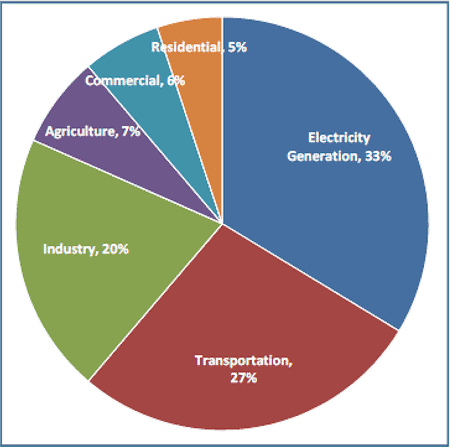
Source: U.S. EPA, Inventory of U.S. Greenhouse Gas Emissions and Sinks: 1990-2009 (U.S. EPA, 2011)
Transportation-Related GHG Emissions
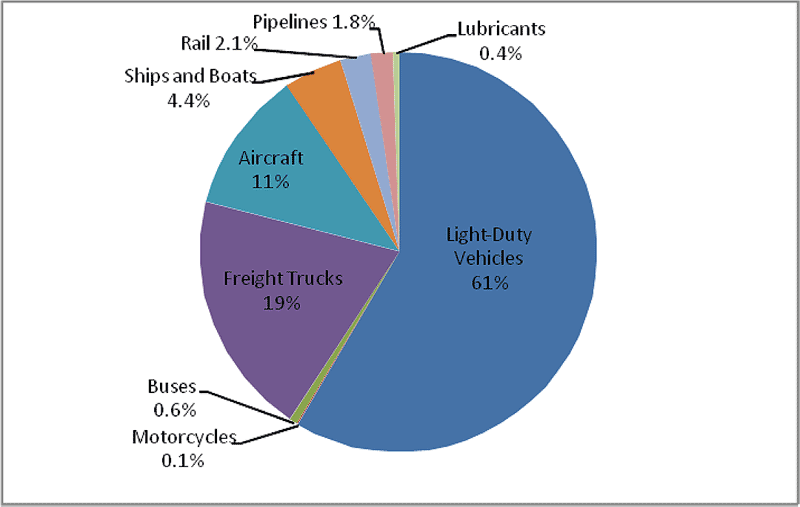
Source: U.S. EPA, Inventory of U.S. Greenhouse Gas Emissions and Sinks: 1990-2009 (U.S. EPA, 2011)
What is the full array of transportation strategies to reduce GHG?
Five GHG "legs"
- Vehicle efficiency
- Low-carbon fuels
- Reductions in travel (including land use)
- Vehicle/System Operations
- Construction, Maintenance, and Agency Operations
|
Examples
- Higher fuel economy standards
- CA's low carbon fuel standard
- Less travel, could be in part due to land use changes
- Signalization, Intelligent Transportation Systems, Eco-driving
- Materials, maintenance practices
|
FHWA Mitigation Activities
- Energy and Emissions Reduction Policy Analysis Tool (EERPAT) and GHG Mitigation Reference Sourcebook (http://www.planning.dot.gov/FHWA_tool/)
- Handbook for Estimating GHG Emissions in the Transportation Planning Process (Late 2012)
- Potential GHG Reductions from Highway Operation and Management Strategies (Late 2012)
- Planning-Level Assessment of Construction and Maintenance Emissions (2013)
What Climate Changes Will Impact Transportation?
- Sea level rise and storm surge
- Precipitation changes
- More intense precipitation events
- Flooding
- Snowpack changes
- Increase in hurricane intensity
- Increase in very hot days
- Permafrost thawing
Why Does FHWA Care About Climate Change Adaptation?
- Need to protect integrity of transportation investments, safety
- Infrastructure has long design life (decades)
- Infrastructure needs to handle new conditions as climate changes
- Adaptation is ensuring that we plan our infrastructure for the future
- DOT Climate Change Adaptation Policy Statement (June 2011)
- "The United States Department of Transportation (DOT) shall integrate consideration of climate change impacts and adaptation into the planning, operations, policies, and programs of DOT in order to ensure that taxpayer resources are invested wisely and that transportation infrastructure, services and operations remain effective in current and future climate conditions."
- FHWA Goal: Systematic consideration of climate change vulnerability and risk in transportation decisionmaking, at system and project levels
FHWA Adaptation Initiatives
- FHWA is developing and sharing information on tools and methodologies that States and MPOs can use to assess risk and prioritize actions:
- Climate projections
- Critical asset identification
- Vulnerability assessment methodologies
Regional Climate Change Effects (2010)
- Report synthesizes information on climate-change projections for transportation decisionmakers
- Snapshot: Summarizes recent science
- Projected changes by region
- Annual, Seasonal Temperature (change in °F)
- Seasonal Precipitation (percent change)
- Where information exists: sea level rise and storm activity
- Also includes information at local, State scales
- Received assistance from climate experts at National Oceanic and Atmospheric Administration (NOAA), U.S. Geological Survey (USGS), Department of Energy (DOE), etc.
https://www.fhwa.dot.gov/hep/climate/climate_effects/
FHWA Vulnerability Assessment Framework
- Goal: Identify most vulnerable assets to climate change threats
- Steps:
- Develop inventory of infrastructure assets
- Gather climate data
- Assess vulnerability and risk of assets to projected climate change
- Analyze, prioritize adaptation options
- Monitor and revisit
https://www.fhwa.dot.gov/hep/climate/conceptual_model62410.htm
Climate Change Vulnerability and Risk Assessment Pilot Locations
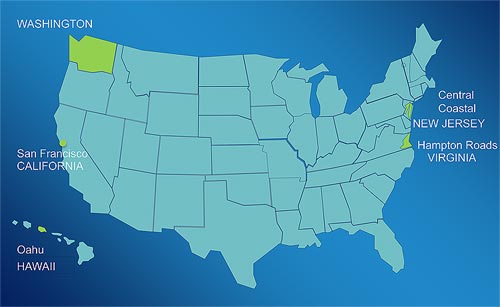
New Jersey Pilot Results
- 2100 Coastal area inundation:
- 48 miles roadway (43 on major roads)
- 3 miles New Jersey (NJ) Transit tracks
- 31 total rail miles impacted
- Ocean city municipal airport
- 2100 Central Study Area inundation:
- 14 miles roadway (1 on major road)
- 1.4 miles NJ Transit lines
- 14 miles major freight lines
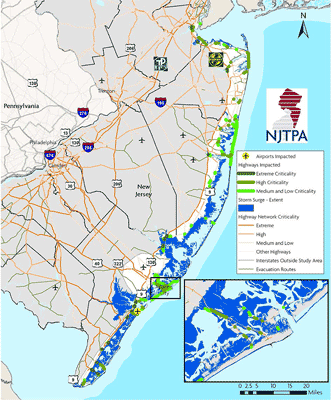
Source: Climate Change Vulnerability and Risk Assessment of New Jersey's Transportation Infrastructure:
http://www.njtpa.org/Plan/Element/Climate/FHWAConceptualModel.aspx
Gulf Coast Project
- Phase 1
- Overview of climate change impacts on transportation infrastructure in central Gulf Coast (completed 2008)
- Phase 2
- Focus on one metropolitan area – Mobile, Alabama
- Development of adaptation tools and strategies that will be transferable to other areas
- Timeframe: 2010-2014
https://www.fhwa.dot.gov/hep/climate/gulf_coast_study
Areas of Consideration by UTCs
- Investigate impacts of climate change and extreme weather on infrastructure planning, design, construction
Exploratory Advanced Research
- Goal: Conduct research on longer term and higher risk breakthrough research
- Opportunities for UTC involvement
- Idea generators
- Conductors of sponsored researcher
- Peer evaluators
- Audience for research results
Human Behavior and Travel Choices
- This focus area leverages research concepts from the social sciences, including psychology and economics, along with more traditional research for improving safety, reducing congestion, and improving the livability of the Nation's communities
Technology, Advanced Policies for Energy and Resource Conservation
- This focus area cuts across infrastructure, operations, and societal and complex natural systems to support innovative methods for reducing highway industry costs and move towards sustainability
Integrated Highway System Concepts (Connected Systems)
- This focus area can improve system operating efficiency reducing energy needs for travel
Breakthrough Concepts in Material Science
- This focus area leverages new approaches in materials science ... for sustainability [and] ... to enhance highway safety, reliability, and resilience
Summary: Areas of Consideration by UTCs
- Develop curricula that incorporate livability and sustainability principles and applications
- Tools and methods for livability/sustainability performance measurement
- Investigate impacts of climate change and extreme weather on infrastructure planning, design, construction
- Research emerging, more sustainable technologies and their potential applications (e.g., new pavement technologies)
Any questions?
For more information, contact:
Sustainability and Climate Change: Mike Culp, 202-366-9229
http://www.sustainablehighways.dot.gov/
www.fhwa.dot.gov/hep/climate/
Livability: Gabe Rousseau, 202-366-8044
www.fhwa.dot.gov/livability








